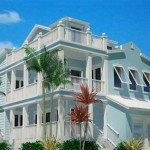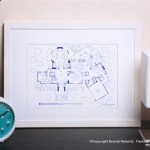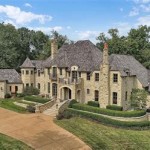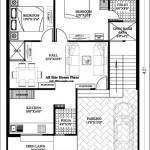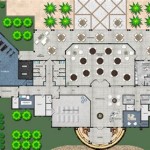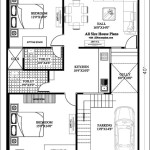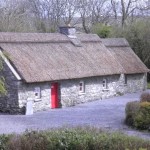Anne Frank House Floor Plan in 3D: Understanding the Secret Annex
The Anne Frank House, located in Amsterdam, is a poignant reminder of the Holocaust and one family's struggle for survival during World War II. The house itself, particularly the Secret Annex (Achterhuis), is central to the story of Anne Frank, her family, and their companions. Understanding the layout of the Secret Annex is crucial to grasping the challenges they faced living in hiding for over two years. Examining a 3D floor plan provides a more comprehensive understanding of the space and its constraints.
The original building at Prinsengracht 263, consisted of a warehouse and office space for Otto Frank's business. The Secret Annex was concealed behind a bookcase in the rear of the building, offering a refuge from Nazi persecution. A 3D floor plan visualization allows for a clear perception of the spatial relationships between the rooms, the limited natural light, and the constant threat of discovery. Such a view offers a more visceral understanding of the conditions endured by the occupants.
Many resources provide schematics and descriptions of the Anne Frank House layout. However, a 3D rendering provides an enriched experience by allowing viewers to virtually "walk" through the space, observe the proximity of rooms, and better understand the daily lives of those who lived there. These 3D models are often based on historical records, architectural drawings, and eyewitness accounts to ensure accuracy. This article explores the layout of the Secret Annex in 3D, emphasizing key aspects that illuminate their lives in hiding.
The Ground Floor and Concealment
The Secret Annex was accessed through a disguised doorway at the back of Otto Frank's business premises. This entrance was crucial for maintaining secrecy. Visitors to the Anne Frank House today see the movable bookcase that concealed the entrance, but a 3D visualization offers a more immersive understanding of its function within the context of the surrounding rooms.
The ground floor of the Secret Annex consisted of a small landing and a flight of stairs leading up to the main living quarters. This landing served as a buffer zone, providing a moment for occupants to assess the situation before entering the main apartment. The 3D representation allows for visualizing this transitional space and its strategic significance in maintaining the illusion of normalcy within the front offices of the building.
The bookcase, a seemingly innocuous piece of furniture, played a vital role in protecting the residents. A 3D model would showcase the bookcase's construction, its integration with the existing structure, and its effectiveness as a barrier. The weight and design of the bookcase made it difficult to move accidentally, further securing their hiding place and adding to the mental burden of the hidden occupants.
The Living Quarters and Shared Spaces
The primary living space in the Secret Annex consisted of several rooms on the upper floors. The Frank family (Otto, Edith, Margot, and Anne) initially occupied a room that served as a combined living and sleeping area. Later, the Van Pels family (Hermann, Auguste, and Peter) joined them, sharing another room. Fritz Pfeffer, a dentist, was the final resident, sharing a room with Anne.
A 3D floor plan effectively demonstrates the limited space available to the eight occupants. The cramped conditions meant a lack of privacy and constant interaction. The model reveals how the limited floor area necessitated careful allocation of space, and how each individual's activities impacted the others. The close proximity also exacerbated tensions and conflicts, as described in Anne's diary.
Beyond the sleeping quarters, there was a communal kitchen, where meals were prepared and shared, and a small bathroom. The constant need for water and sanitation required careful planning to avoid detection. A 3D model can visualize the locations of water pipes and drains, revealing the challenges of maintaining hygiene without attracting attention from those outside. The location of the communal areas further emphasizes the constant need for coordination and compromise among the residents.
Windows were a source of danger and rare connection to the outside world. They had to be carefully covered during the day to prevent any light from escaping, which could alert passersby. The 3D view can illustrate the orientation of the windows relative to the surrounding buildings and streets, emphasizing the constant fear of being seen. The lack of fresh air and sunlight contributed to the psychological stress of confinement.
Attic and Hidden Spaces
The Secret Annex included an attic space, which served a variety of purposes. It was primarily used for storage, providing a place to keep food, clothing, and other essential supplies. It also offered a limited degree of privacy and escape, particularly for Anne and Peter, who would often retreat there for moments of quiet reflection.
A 3D model of the attic highlights its isolation and its potential as a refuge. Access to the attic was via a steep staircase, which made it difficult to navigate, particularly in silence. The attic's uninsulated roof and the presence of rodents added to the hardships of living in the Secret Annex. Despite its drawbacks, the attic provided a much-needed change of scenery and a sense of separation from the crowded living quarters below.
The attic connected to other hidden spaces within the building, illustrating the complex layout and the possibility of escape routes, however slim. These hidden pathways and alcoves are better understood through a 3D representation. While these pathways did not ultimately provide a means of escape, visualizing them clarifies the potential strategies considered by the occupants and their protectors.
The 3D visualization brings the story to life. It reveals how the occupants lived and moved within its walls. It highlights the constant balance between maintaining secrecy and trying to retain some semblance of normalcy. The meticulous planning and innovative use of space are vividly displayed and understood through a 3D rendering of the Anne Frank House and the Secret Annex.
Furthermore, many modern 3D floor plan models allow users to interact with the space. This allows detailed exploration of furniture placement, window views, and the physical relationships between individuals forced to live together in secrecy and fear. The level of immersion facilitates emotional connections and a greater appreciation for their plight.
The importance of understanding the physical space of the Secret Annex is paramount to truly grasping the experiences of Anne Frank and her companions. While written accounts and historical documents provide valuable information, a 3D floor plan enhances comprehension by allowing viewers to visualize the living conditions, the challenges, and the constant threat of discovery that permeated their lives. It serves as a lasting reminder of the human cost of intolerance and the enduring power of hope in the face of adversity.

The Secret Annex Anne Frank House

The Secret Annex Anne Frank S House In 3d History Tech

Anne Frank House Cardboard Model
File Anne Frank House Model Jpg Wikimedia Commons

Pin Page

World Image

The Secret Annexe A Blueprint Of Anne Frank House

Anne Frank House Cardboard Model

The Secret Annex Anne Frank S House In 3d History Tech

Anne Frank Wrote Dirty Jokes About Sex And Prostitution As Researchers Uncover Pages From Her Dia

